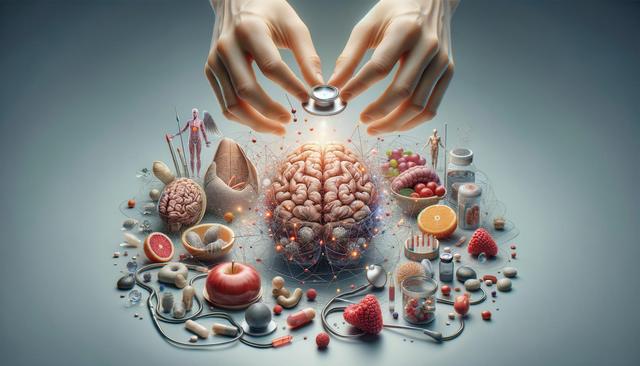Understanding the Role of Exercise in Stroke Rehabilitation
Stroke rehabilitation is a critical phase in the recovery journey, aiming to help individuals regain as much function and independence as possible. Exercise plays a significant role in this process, as it helps rebuild strength, coordination, and confidence. The primary goal of stroke rehabilitation is to restore lost abilities and improve mobility after stroke. Through carefully designed programs, patients can work with healthcare professionals to tailor routines that match their specific needs and limitations. Physical therapy for stroke patients is typically the starting point, but incorporating at-home stroke recovery exercises can accelerate progress and support long-term improvements.
Regular movement and targeted exercises support neural plasticity—the brain’s ability to reorganize itself by forming new neural connections. This is especially important after a stroke, which may have damaged areas responsible for motor control. As part of a comprehensive recovery plan, stroke recovery exercises should be consistent, safe, and monitored when necessary. Collaborating with a physical therapist ensures the exercises are suitable and adjusted as recovery progresses.
Top Exercises to Regain Strength After Stroke
Rebuilding strength after a stroke requires a mix of resistance and functional exercises that target weakened muscles and encourage symmetrical movement. The best exercises after stroke often focus on the core, arms, and legs to enhance stability and function in daily activities. Strength training not only improves muscle tone but also supports overall endurance and balance.
Here are some common strength-focused exercises used in stroke rehabilitation:
- Seated leg lifts: Strengthen the quadriceps and improve leg control.
- Wall push-ups: Build upper body strength without requiring full body weight support.
- Hand grip exercises: Help restore hand function and coordination.
- Shoulder shrugs and rolls: Promote range of motion and reduce stiffness.
These exercises can be performed during physical therapy sessions or as part of an at-home routine. It’s important to begin with low-intensity repetitions and increase gradually under professional guidance. Individuals working to regain strength after stroke should prioritize consistency over intensity to avoid overexertion or potential injury.
Improving Mobility Through Targeted Movement
Mobility is often one of the most affected areas following a stroke. Challenges with walking, balance, and coordination can limit independence and increase fall risk. Fortunately, targeted exercises can help improve mobility after stroke, especially when integrated into a daily routine. These exercises focus on restoring functional movement and retraining the limbs to perform coordinated actions.
Some effective mobility-enhancing exercises include:
- Marching in place: Encourages leg movement and supports balance training.
- Heel-to-toe walk: Improves coordination and gait stability.
- Side-stepping: Enhances lateral movement and spatial awareness.
- Ankle circles: Promote joint flexibility and circulation.
Practicing these movements regularly can lead to noticeable improvements in walking ability and general mobility. Physical therapy for stroke patients often includes mobility training using assistive devices or parallel bars to ensure safety. Over time, as strength and balance improve, individuals may graduate to more advanced mobility drills.
Incorporating At-Home Stroke Recovery Exercises
While clinical therapy sessions are essential, recovery frequently continues at home, where everyday routines become part of the rehabilitation process. At-home stroke recovery exercises empower patients to take an active role in their healing and maintain momentum between therapy appointments. These exercises can be simple yet effective, focusing on repetition, control, and functional improvement.
Examples of at-home exercises include:
- Chair stands: Help strengthen the legs and improve the ability to transition from sitting to standing.
- Arm reaches: Encourage shoulder and arm mobility, which is critical for daily tasks.
- Towel slides on a table: Promote hand-eye coordination and fine motor skills.
- Balance holds: Standing near a counter or sturdy surface to practice weight shifting and balance.
Consistency is key with at-home exercises. Even short daily sessions can contribute to long-term gains. Family members or caregivers can assist by offering encouragement, helping with setup, and ensuring a safe environment. Regular check-ins with a therapist can also help adjust the exercise plan as recovery progresses.
Staying Motivated and Tracking Progress
Maintaining motivation during stroke rehabilitation can be challenging, especially when progress feels slow. Setting realistic goals and celebrating small achievements can help individuals stay engaged with their recovery plan. Clear communication with healthcare providers, therapists, and caregivers is vital to ensure expectations are aligned and support systems are in place.
Tracking progress can provide tangible evidence of improvement and reinforce commitment. Tools like journals, mobile apps, or simple checklists can help patients monitor their completion of daily stroke recovery exercises. Visualizing improvements, such as walking longer distances or lifting heavier objects, can foster a sense of accomplishment and drive further effort.
It’s also helpful to incorporate variety into exercise routines. Alternating between different types of activities—such as strength training, mobility exercises, and balance drills—can prevent boredom and target different aspects of recovery. Participating in group classes or community programs for stroke survivors can also provide social interaction and emotional support, which are key components of holistic healing.
Conclusion: Supporting a Successful Stroke Recovery Journey
Stroke rehabilitation is a multifaceted process that requires patience, persistence, and the right combination of therapy and self-led effort. Utilizing a mix of physical therapy for stroke patients and at-home stroke recovery exercises can significantly improve outcomes. Whether the goal is to regain strength after stroke or to improve mobility after stroke, consistent and well-structured routines offer the foundation for progress. By staying motivated, setting achievable goals, and working closely with healthcare professionals, individuals can navigate their recovery with greater confidence and success.




Leave a Reply